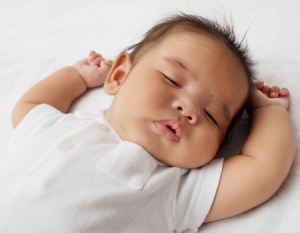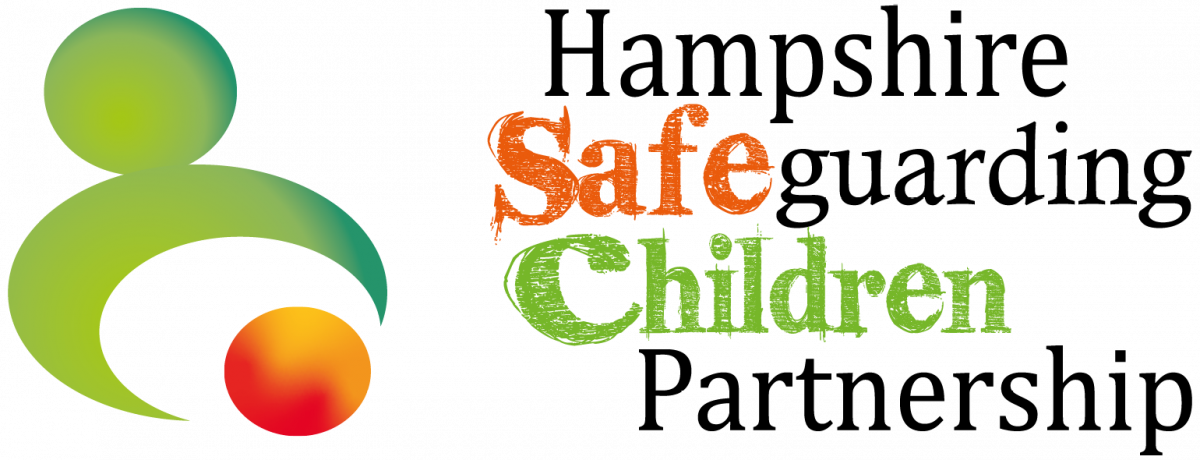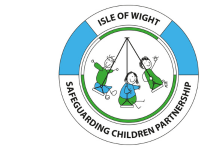Overview
Hampshire and the Isle of Wight Safeguarding Children Partnerships have developed a programme to raise awareness of the risks associated with unsafe sleeping in babies.

Why are we doing this programme?
- Between April 2019 and March 2022, 14 babies have died in Hampshire where unsafe safe sleep was a presenting factor.
- A survey of professionals highlighted the need to create a resource where a consistent message could be shared with parents/carers by multiple agencies at stages throughout pregnancy and post birth.
- To bring messages regarding safe sleep together in one accessible leaflet.
- The need for clarity relating to the criminal offence of overlaying:
- Where the cause of death for an infant under three years is suffocation (not caused by disease/foreign body etc.)
- The infant was in bed with a person who has attained the age of 16 years.
- And that person was under the influence of drink or a prohibited drug either when they went to bed or at any later time before the suffocation.
What do we want to achieve?
- Reduction in the number of baby deaths where unsafe safe sleep is a presenting factor.
- A single resource with a clear consistent message for professionals to access and deliver safe sleep messages to parents/carers.
- Parents/carers are aware of all sleep risk factors and can make informed choices for their baby.
What is Every Sleep Counts?
- Every Sleep Counts is a programme of prevention aimed at parents and carers.
- It supports professionals to deliver consistent key safe sleep messages at numerous touch points during pregnancy and after birth.
- It brings together information on multiple risk factors associated with unsafe sleep.
Why is safe sleep so important?
Safe Sleep is important to reduce the risk of sudden infant death syndrome (SIDS).
The cause of SIDS is not fully known. It is possible that many factors contribute, but some factors are known to make SIDS more likely. These include:
- The association between co-sleeping and SIDS whether the co-sleeping was intentional or unintentional and the place of sleep (sofa versus bed).
- The association of smoking (mother and partner/carer) and SIDS.
- The association of co-sleeping and SIDS and parent/carer alcohol and drug use.
- The association between SIDS and low birth weight or premature babies.
HIPS Safe Sleep Procedure
The Hampshire, Isle of Wight, Portsmouth and Southampton (HIPS) Safeguarding Children Partnerships have agreed to ensure that all safe sleep messages are delivered to parents consistently across the areas. This includes adopting learning and responding to recommendations from both local and national child safeguarding practice reviews and/or thematic reviews around child deaths linked to unsafe sleeping arrangements.
Any immediate safeguarding concerns should be addressed in a timely manner following local safeguarding children partnership (LSCP) procedures.
Aims
- To reduce the death rate of babies and infants by identifying and assessing where babies sleep and maximising the ability of parents and/or carers to implement safe sleep practices.
- To reduce the number of babies and infants who are put to sleep in unsafe conditions by ensuring that clear and consistent safe sleep messages are delivered to and understood by parents/carers.
- To empower staff across the agencies to identify safe sleep concerns and work with parents/carers to address and mitigate any risks.
- To provide an evidence base for professionals to refer to when discussing safe sleep messages with parents/carers.
- Should a parent/carer refuse to follow safer sleep messages and advice, all professionals must document their concerns and what they have done to mitigate them. All professionals must raise these concerns with the safeguarding lead in their organisation and where possible, contact the family’s health visitor and ask for their advice. Professionals should consider any barriers that may be impacting on parenting capacity (including learning difficulties, substance misuse, mental health issues, poverty) and if concerns persist, professionals should refer to the HIPS Procedures on child neglect.
It is the practitioner’s responsibility to discuss and record the information they give to parents/carers about safe sleeping arrangements at all key contacts. Information must be provided in a manner that is understood by the parent/carer. For parents/carers who do not understand English, an approved interpreter should be used. Similarly, families with other communication needs should be offered information in such a way as best facilitates their understanding. For further information, please refer to the HIPS Procedure on Safe Sleep for Babies and Infants.
Portsmouth and Southampton deliver key safe sleep messages supported by information and resources from the Lullaby Trust. Further information on these resources can be found here.
Key messages
The safest place for your baby to sleep is on their back in a cot or Moses basket in the same room as parents/carers for the first six months.
- Car seats should only be used for journeys. If a baby is under six weeks old, they should be taken out for a stretch every 30 minutes. If a baby is over six weeks old they should be taken out for a stretch every hour. Babies heads may drop forward making it hard for them to breath. Babies can’t regulate their temperate and could get very hot in a car seat if they are over dressed.
- Babies can’t regulate their own temperature and can easily overheat. Duvets and pillows might cover their face and make it difficult to breath.
- Its lovely to cuddle a sleeping baby but in bed the body heat of an adult could cause the baby to overheat or a sleeping adult could roll onto the baby causing death or serious harm.
- Smoking significantly increases the risk of Sudden Infant Death Syndrome. Parents should be supported to quit smoking though services provided in Hampshire and the Isle of Wight. For parents that continue to smoke they should be advised to make the home smoke free by not smoking indoors, changing their clothes after smoking and washing their hands before coming into contact with the baby.
- Prescription and over the counter medication, alcohol and street drugs can make you drowsy and may impact your response to a baby.
- A travel cot is an ideal place for a baby to sleep when away from home. The mattress on a travel cot may seem thin but this is perfect for your baby to sleep on. Babies need a firm flat sleep surface. Extra padding for the mattress isn’t needed as it makes the surface too soft which can cause a risk to the baby if it moves. It can also get too hot. As babies can’t regulate their own temperature this can lead to over heating.
- Airbeds, sofa cushions, folded duvets or blankets, footstalls and pouffes are not safe for a baby to sleep on as they can move and are soft. Babies could fall or get wedged in a position that makes it hard for them to breathe.
- Sleep products are designed for specific ages and sizes. Using a product that is not suitable for the baby’s age/size can be very dangerous. Just because something is made by a brand you know or sold on the high street doesn’t make it safe.
- A sofa is one of the most dangerous places to fall asleep with a baby and increases the risks of Sudden Infant Death Syndrome by up to 50 times. Babies could fall off the sofa, or become wedged at the back making it difficult for them to breath.
Touch points for delivering the Every Sleep Counts programme have been agreed by midwifery, health visiting and GPs to ensure messages are given and repeated at appropriate times.
Download the launch presentation of the Every Sleep Counts programme.
Access the HIPS Procedure on Safe Sleep for Babies and Infants.

